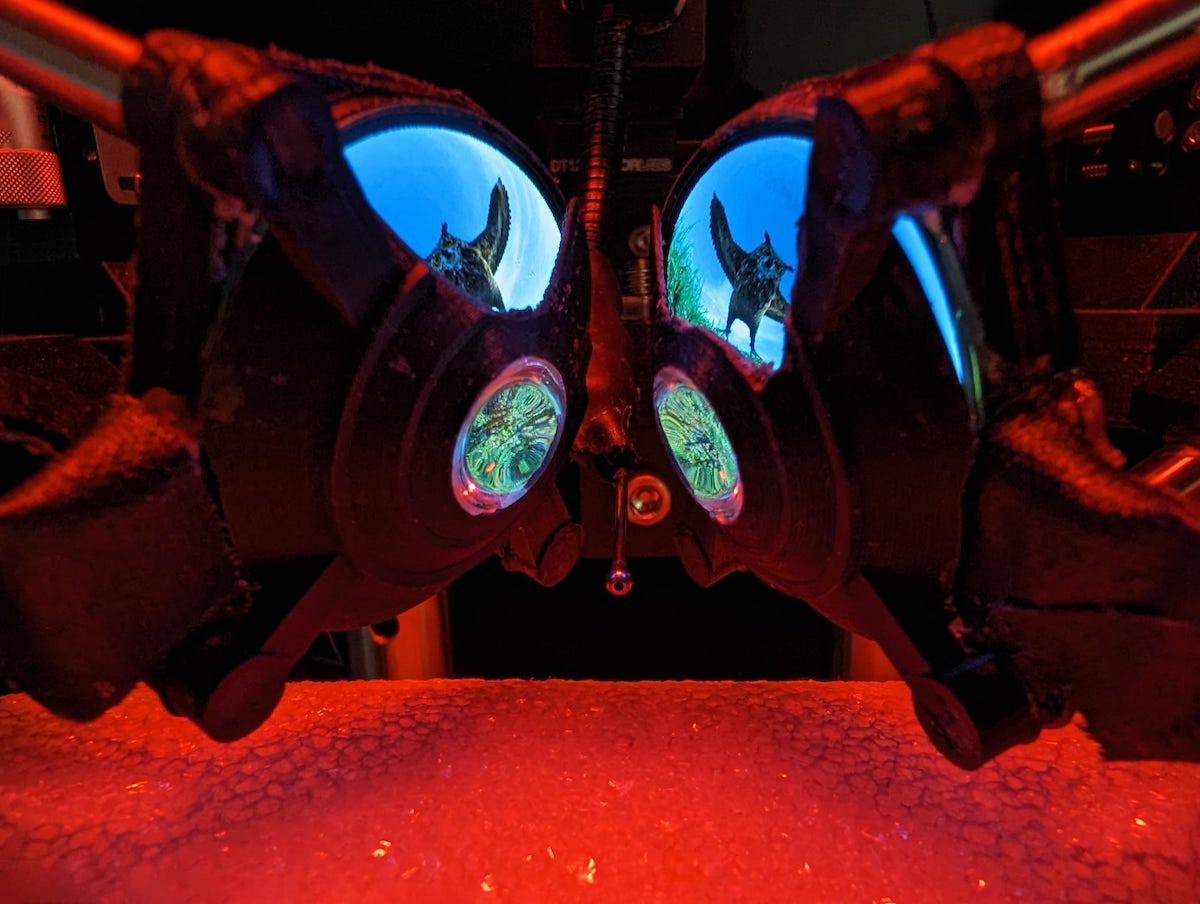Northwestern University researchers have developed new virtual reality goggles for lab mice, providing these indoor critters with the most immersive experience of life in the wild to date.
The new system is called Miniature Rodent Stereo Illumination VR (iMRSIV), and it uses custom-designed lenses and OLED displays to provide a 180-degree field-of-view for each eye.
Scientists have been using VR to study mouse brains for years, but traditional systems had a lot of limitations. The mice have always kind of known they were still in a lab.
“For the past 15 years, we have been using VR systems for mice,” said Northwestern’s Daniel Dombeck, the study’s senior author. “So far, labs have been using big computer or projection screens to surround an animal. For humans, this is like watching a TV in your living room. You still see your couch and your walls. There are cues around you, telling you that you aren’t inside the scene. Now think about putting on VR goggles, like Oculus Rift, that take up your full vision. You don’t see anything but the projected scene, and a different scene is projected into each eye to create depth information. That’s been missing for mice.”
READ MORE: Cats Can Make You Schizophrenic, According to Study
For the first time, researchers can simulate overhead threats (like birds) and study the mouse’s brain activity in response to these simulations.

Mice wearing these goggles master tasks more efficiently and engage more naturally with the virtual environment, reducing training times. The goggles are also relatively inexpensive and user-friendly, potentially making neurobiology research more accessible and allowing for more experiments in a variety of lab settings.
The study was led by Professor Daniel Dombeck and his team at Northwestern’s Weinberg College of Arts and Sciences. Dombeck’s lab specializes in VR-based systems and high-resolution imaging for animal research.




